Brazilian fuel cycle company Indústrias Nucleares do Brasil (INB) has announced that it will resume exploration for uranium in the country after a forty-year hiatus.
INB has launched the Uranium Prospecting and Mining Partnership Program. It is seeking to work in partnership with companies in the mining sector. INB said new research will be conducted in areas known for their “great mineral potential for this valuable substance”.
Adauto Seixas is the INB President. He said, “This new round of research comes at an important time for the country, since national production is still lower than the domestic consumption of the Angra I and II nuclear plants, and taking into account the increase in demand with the completion of Angra III.”
INB mentioned that the price of uranium has more than tripled in recent years. This “brings an avenue of opportunities for growth in the sector in the form of exporting concentrated uranium, and also with the possibility of offering nuclear fuel to the international market, adding value to the local production chain”.
INB added that “According to a study conducted forty years ago, Brazil had the eighth largest reserve in the world. However, considering that the second largest reserve is in Kazakhstan, which is the same size as the state of Rio de Janeiro, it is possible that the country could eventually take second place.”
According to World Nuclear Association (WNA), exploration in the 1970s and 1980s indicated that Brazil has reasonably assured resources of two hundred and ten thousand tons of uranium. There has been little investment in exploration since the mid-1980s.
The country has three main deposits. Pocos de Caldas in Minas Gerais state, where a uranium mine was closed in 1997; Lagoa Real or Caetité in Bahia state which has been operating since 1999; and Itataia, which is now called Santa Quitéria, in Ceará state, where the production of uranium as a co-product with phosphate is planned.
Uranium has been mined in Brazil since 1982, but the only currently operating mine is INB’s Lagoa Real/Caetité mine, with a capacity of three hundred and forty tons of uranium per year. The mine has known resources of ten thousand tons of uranium at 0.3%U.
INB began developing the adjacent Engenho mine in January 2017. It is a two hundred to three hundred tons of uranium per year open pit operation. Production was initially planned to begin in October of 2017, but has not yet begun.
In January of 2020, the country’s energy minister stated that investment in INB would allow it to produce one hundred and fifty tons of uranium annually from Caetité, starting in 2020. Production would expand to three hundred and sixty tons of uranium per year by 2023. The Santa Quitéria Consortium is a partnership between INB and privately owned fertilizer producer Galvani. It expects to produce two thousand three hundred tons of uranium concentrate annually from the Itataia deposit.
In 2022, Brazil produced forty-three tons of uranium. All mined uranium is used domestically, after it has been converted and enriched abroad. The country’s uranium consumption is currently about three hundred and thirty-nine tons of uranium per year.
In December of 2022, INB signed a contract with Russia’s Rosatom for the supply of three hundred and thirty tons of uranium in the form of natural UF6 to fuel the Angra nuclear power plant from 2023 to 2027. In May of 2023, three contracts were signed with Westinghouse to cover the supply of advanced fuel assemblies to be used for Angra 1 reloads.
Blog
-
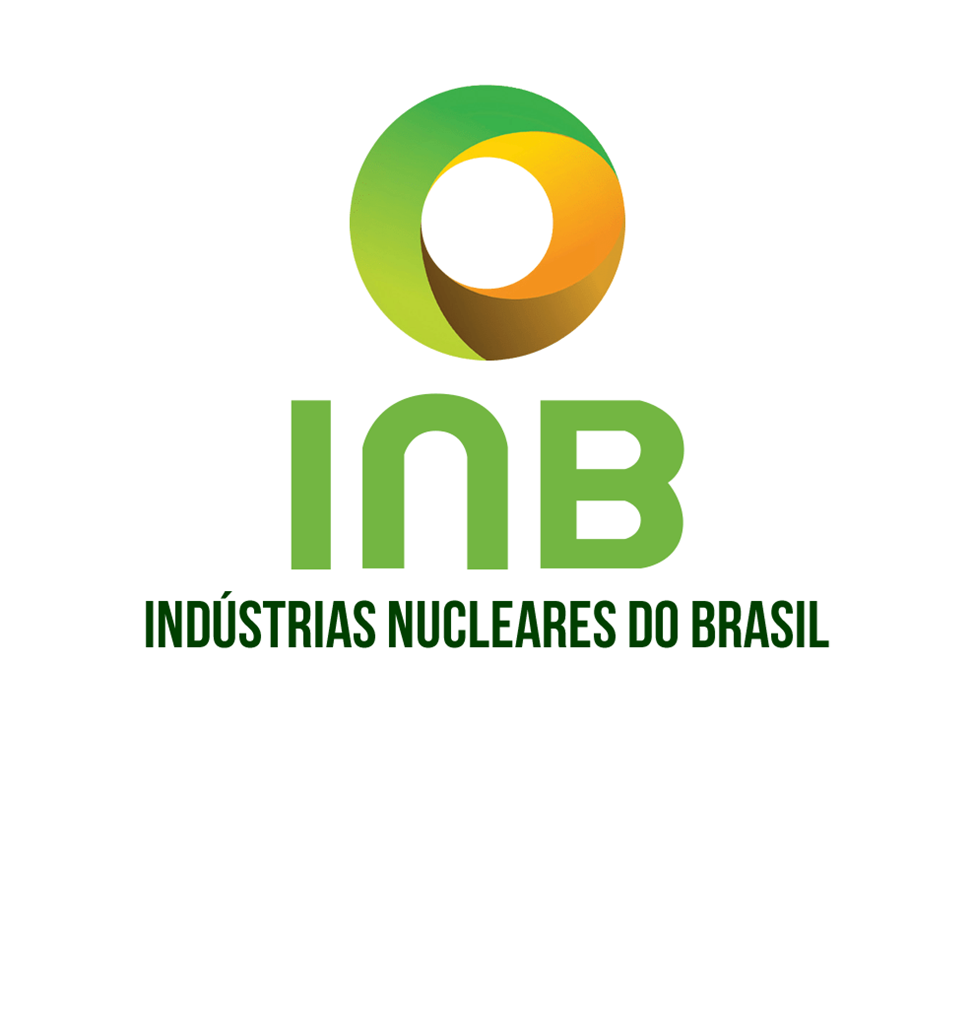
Nuclear Reactors 1421 – Brazil To Begin Explorations For Uranium Deposits
-
Nuclear News Roundup Sep 03, 2024
Putin Allies Worry Nuclear Threat Isn’t Working newsweek.com
Fuel loading begins ahead of Onagawa 2 restart world-nuclear-news.org
Subsidies announced for Sizewell C development world-nuclear-news.org
Russia’s draft energy plan sets out new nuclear expansion world-nuclear-news.org
-
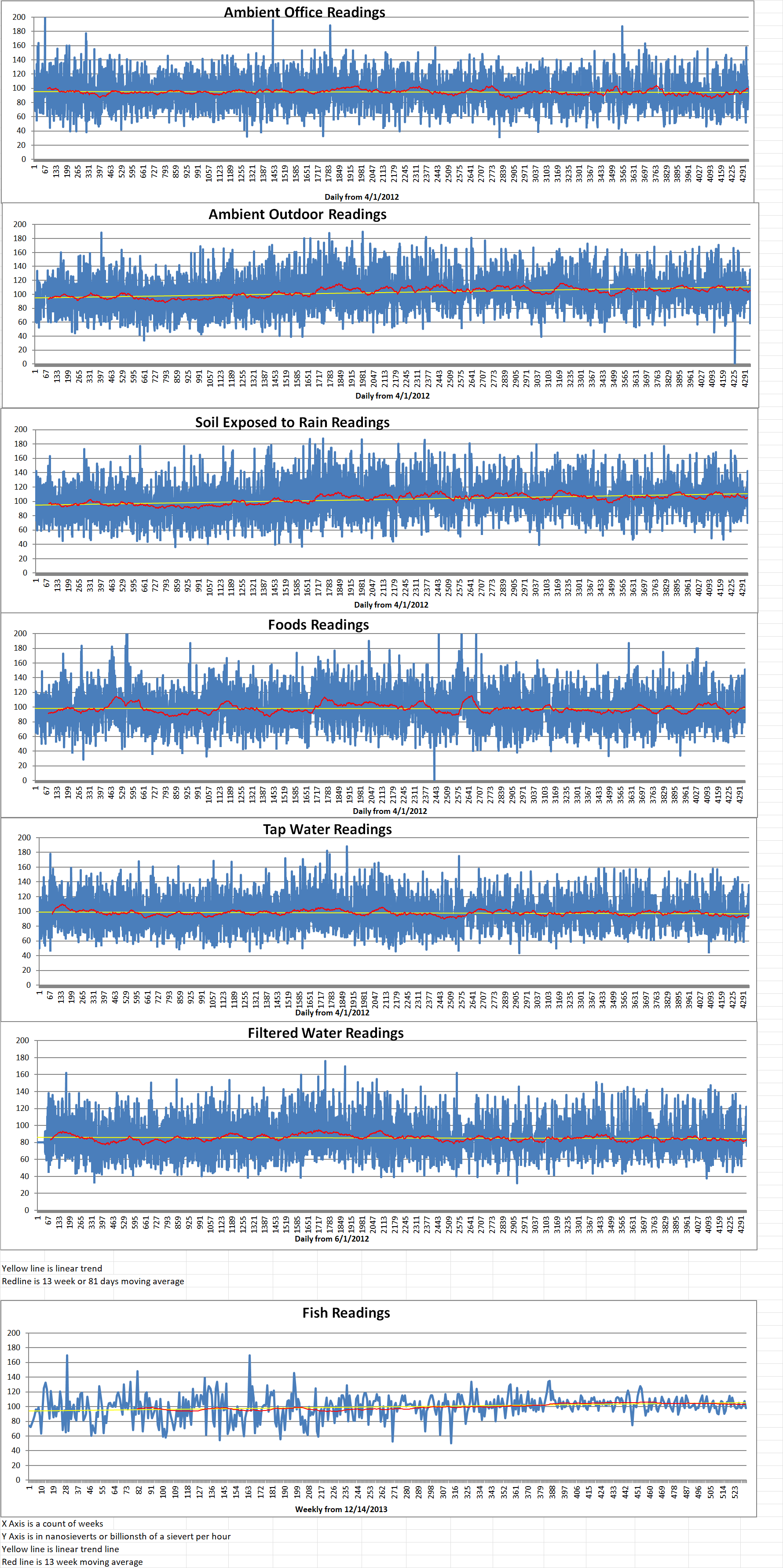
Geiger Readings for Sep 03, 2024
Ambient office = 131 nanosieverts per hour
Ambient outside = 92 nanosieverts per hour
Soil exposed to rain water = 90 nanosieverts per hour
Beefsteak tomato from Central Market = 143 nanosieverts per hour
Tap water = 102 nanosieverts per hour
Filter water = 87 nanosieverts per hour
-

Nuclear Reactors 1420 – Maersk, Lloyds Register and Core Power Are Studying The Use Of Nuclear Power For Container Ships
Nuclear-powered container ships could be moving cargo in and out of Europe by the end of the decade. Danish company Maersk moves twelve million containers a year. It has partnered with Lloyd’s Register and nuclear technology start-up Core Power to study the regulatory feasibility of using fourth-generation nuclear reactors to supply power to container ships. Negative public perception and waste management continue to be a challenge for the nuclear industry. The study will investigate how to improve regulation and safety rules for its use.
Ole Graa Jakobsen is Maersk’s head of fleet technology. He said, “Nuclear power holds a number of challenges related to for example safety, waste management, and regulatory acceptance across regions. If these challenges can be addressed by development of the new so-called fourth-generation reactor designs, nuclear power could potentially mature into another possible decarbonization pathway for the logistics industry 10 to 15 years in the future.”
Large maritime vessels run on bunker fuel which is a tar-like substance that belongs to a large family of petroleum-based fuel oils. The maritime transport industry is responsible for three percent of global total carbon emissions. Production has increased by twenty percent over the last decade. A U.N. Trade and Development report said that it would cost up to twenty-eight billion dollars annually to decarbonize the world’s fleet by 2050.
Maersk has set the ambitious goal of reaching net zero by 2040. It is investing heavily in green methanol to decarbonize. Its joint study with Core Power and Lloyd’s Register into nuclear power may open up the possibility of a multi-fuel pathway.
Lloyd’s Register released a report last month on the use of nuclear power as an alternative low carbon maritime fuel. It highlighted how nuclear power could provide a cost-effective solution for the maritime industry because nuclear vessels would not need to be refueled as often as bunker-using container vessels. They consume around sixty-three thousand gallons of fuel per day and need to refuel every few months.
Nuclear power has been used for many military vessels, with naval reactors, widely used in the US military, typically needing to be refueled every ten years. Newer reactor models have been designed to last up to fifty years in aircraft carriers and submarines. This allows them to travel distances of more than ninety-three million miles.
Though nuclear power has been successful in the military, progress in the maritime industry has been slow because of cost restraints and safety concerns around ships entering ports.
Lloyd’s also says that the designs for nuclear reactors currently under consideration for the maritime industry include molten salt reactors (MSR) and micro-reactors which have passive safety features in place to prevent nuclear accidents. Newer reactors contain cooling systems do not depend on emergency generators or pumps. This makes them “walk away safe” in the event of a malfunction.
Tighter regulation is required on how to dispose of large volumes of radioactive waste more efficiently. The report maintains that fourth-generation reactors will have the capacity to reduce the amount of low-level waste produced, which accounts for ninety percent of nuclear waste.
The International Chamber of Shipping 2022-2023 survey of more than 130 maritime executives reported that nine percent anticipate nuclear power will find commercial use in the next decade.
The joint study involving Maersk will mainly look to provide evidence for regulatory changes in safety and operation around nuclear power. These changes will improve the understanding of how nuclear power works for members of the maritime supply chain who will be affected by its use. The end goal of the study is to create a framework for the construction of a nuclear-powered container ship to be used in a European port.
Mikal Bøe is the CEO of Core Power. He said that he expects first orders for reactor-equipped vessels to come in by around 2028-29, and hopes to build a ten-billion-dollar order book by 2030. -
Nuclear News Roundup Sep 02, 2024
Anti-nuclear energy stance fades among LDP presidential hopefuls japantimes.com
Nuclear power likely to be the hottest topic at NY’S energy summit in Syracuse Syracuse.com
Nigeria and China Sign Economic, Nuclear Energy Pact usnews.com
China Reacts After Russia Says It Intends To Change Nuclear War Policy newsweek.com
-
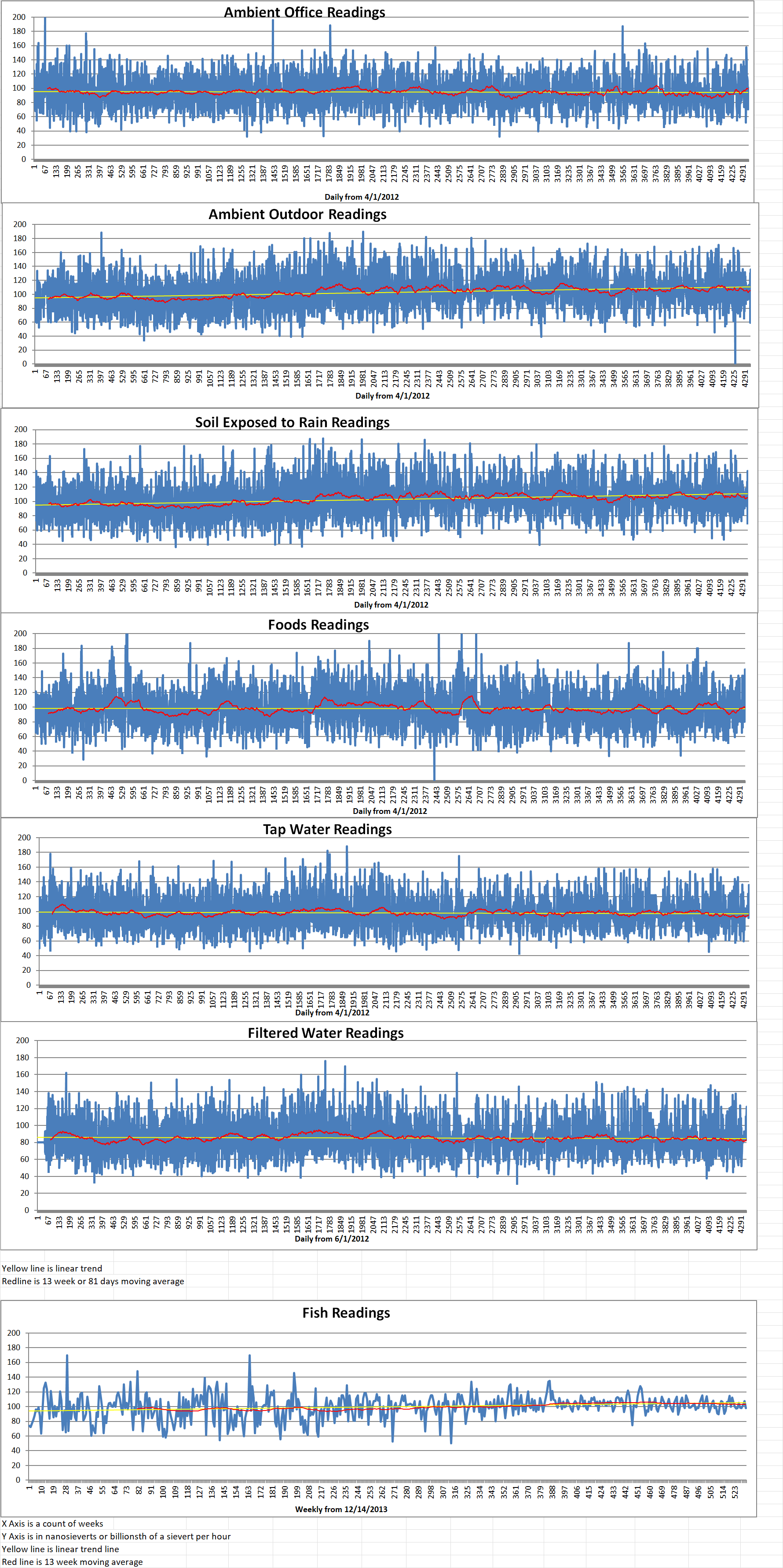
Geiger Readings for Sep 02, 2024
Ambient office = 115 nanosieverts per hour
Ambient outside = 95 nanosieverts per hour
Soil exposed to rain water = 98 nanosieverts per hour
Avocado from Central Market = 65 nanosieverts per hour
Tap water = 93 nanosieverts per hour
Filter water = 80 nanosieverts per hour
-
Nuclear News Roundup Sep 01, 2024
Westinghouse tech-based nuclear reactors approved for projects in China pennbizreport.com
America’s nuclear ‘downwinders’ deserve justice yahoo.com
Enough is Enough: End Nuclear Testing Once and For All un.org
Russia’s Rosatom chief sees very high risk of strikes on Kursk nuclear plant English.alarabiya.net
-
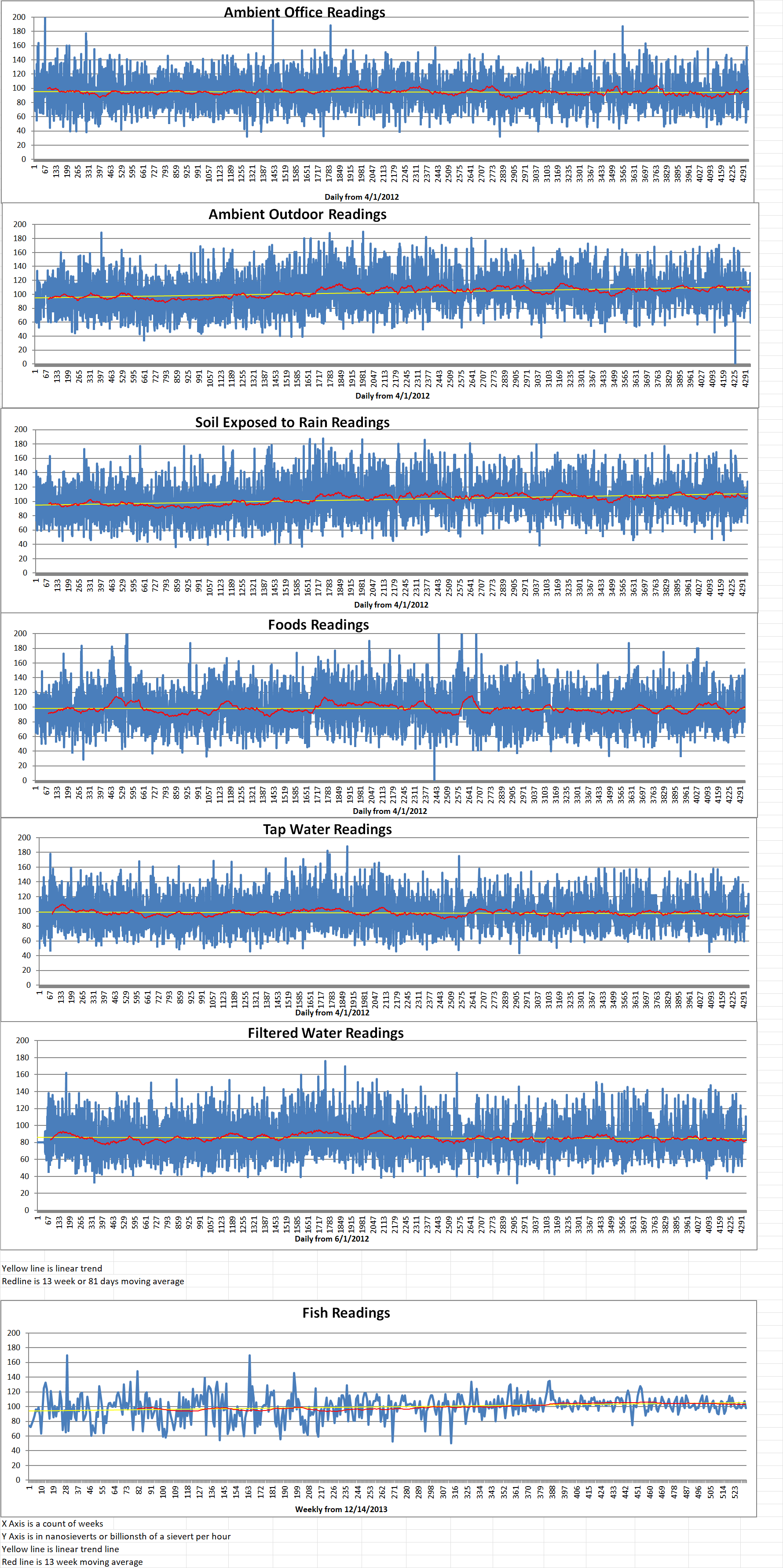
Geiger Readings for Sep 01, 2024
Ambient office = 108 nanosieverts per hour
Ambient outside = 112 nanosieverts per hour
Soil exposed to rain water = 113 nanosieverts per hour
Avocado from Central Market = 100 nanosieverts per hour
Tap water = 96 nanosieverts per hour
Filter water = 87 nanosieverts per hour
-
Nuclear News Roundup Aug 31, 2024
Commercial SMR Agreement Reached at U.S-Africa Nuclear Energy Summit energycentral.com
Russia to change its nuclear doctrine in response to West’s “escalation course” Pravda.com.ua
US prioritizes deterrence over denuclearization on North Korea, experts say voanews.com
Kazakh President Announces Date For Controversial Nuclear Plant Project rferl.org
-
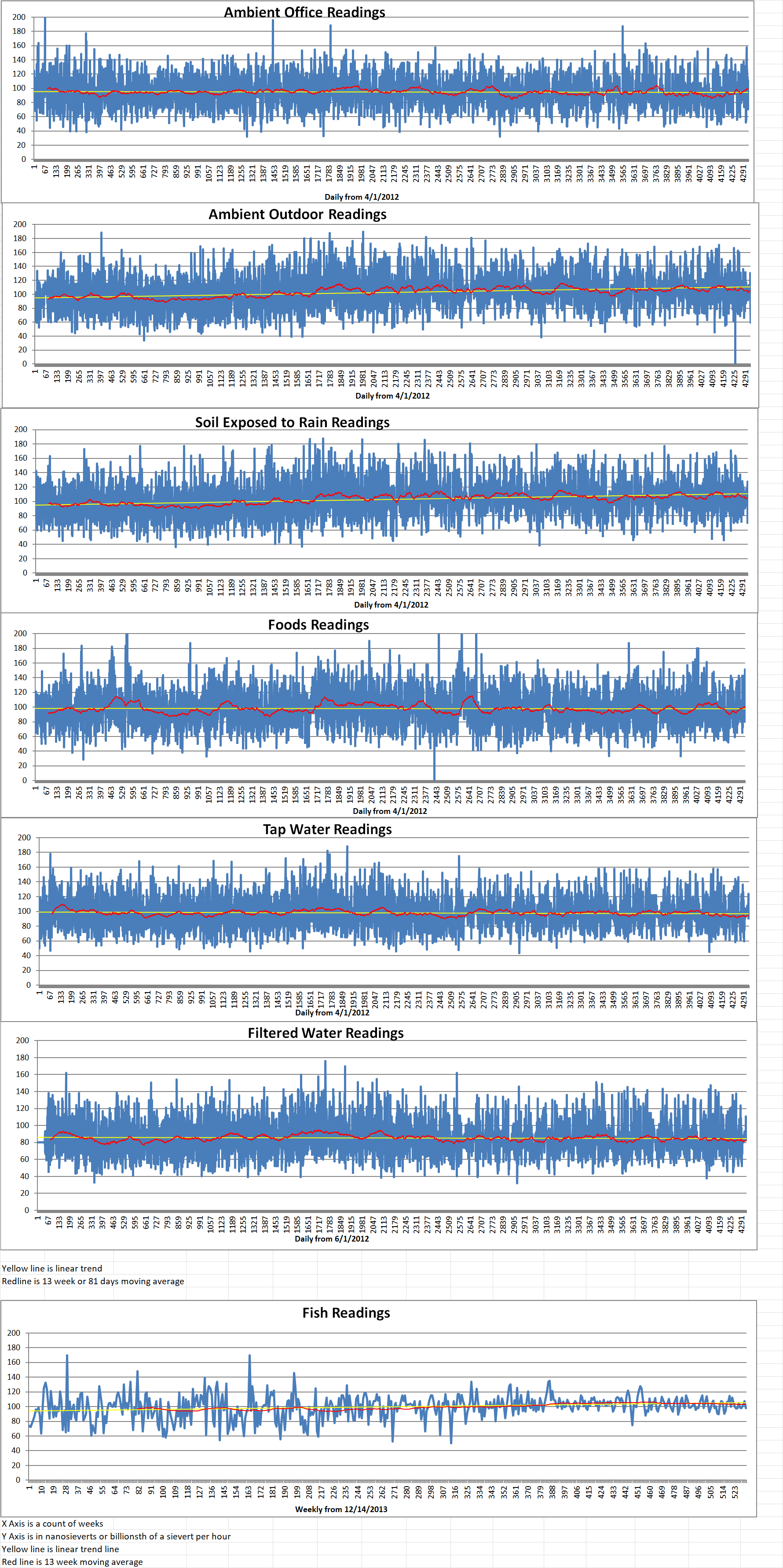
Geiger Readings for Aug 31, 2024
Ambient office = 87 nanosieverts per hour
Ambient outside = 99 nanosieverts per hour
Soil exposed to rain water = 95 nanosieverts per hour
Green onions from Central Market = 84 nanosieverts per hour
Tap water = 96 nanosieverts per hour
Filter water = 83 nanosieverts per hour
Dover Sole from Central = 98 nanosieverts per hour
